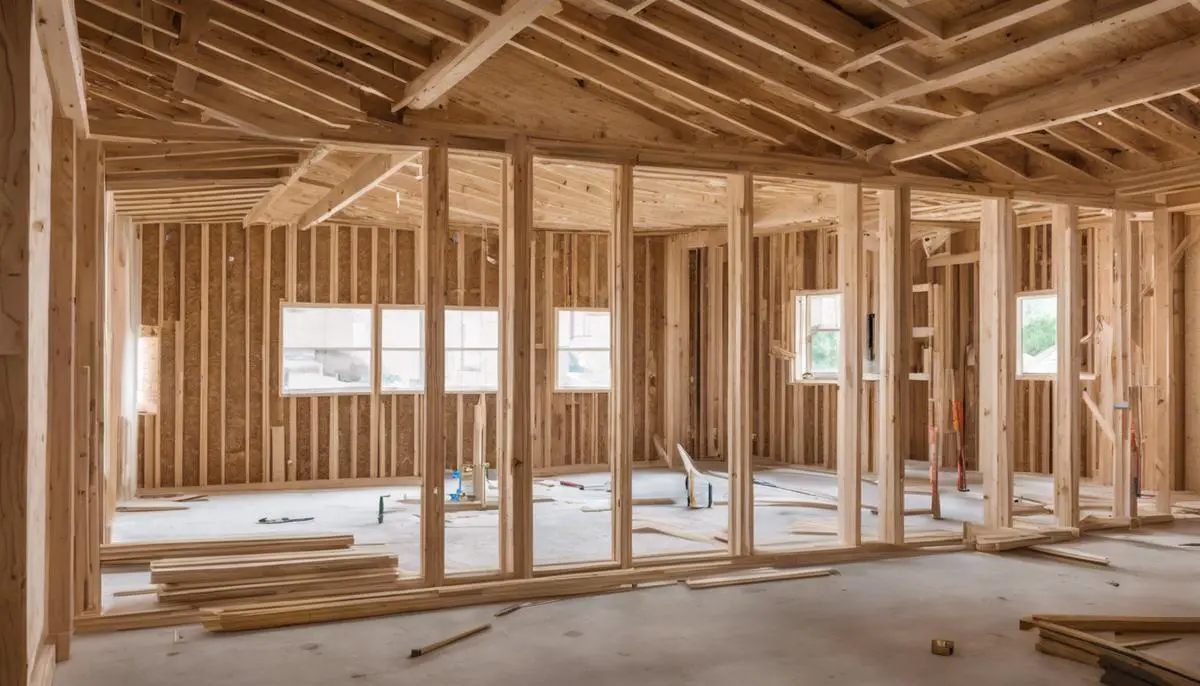Using PT Lumber Indoors: A How-To Guide

The Evolution of Pressure-Treated Lumber
The world of construction and DIY projects has witnessed a significant evolution, particularly in the realm of pressure-treated lumber. Once a staple for outdoor projects, the conversation around bringing pressure-treated wood indoors has sparked debates, thanks to its historical chemical treatments.
This tale of progress, from chromated copper arsenate (CCA) to less hazardous alternatives like Alkaline Copper Quaternary (ACQ) and Micronized Copper Quaternary (MCQ), heralds a new era of safer, more environmentally friendly treated wood.
In the past, pressure-treated lumber was synonymous with CCA, a concoction that included arsenic, known for its preservative qualities against rot, insects, and weathering. However, the toxic nature of arsenic raised concerns, particularly regarding its implications for health and the environment.
The vivid green hue of CCA-treated wood became a visual cue of its potent chemical composition, especially concerning when considered for indoor use where direct contact and inhalation posed risks.
As understanding grew and the demand for safer alternatives increased, the industry responded with innovation, leading to the introduction of ACQ and MCQ treatments. These newer solutions replaced arsenic with copper, a less toxic option, which still effectively protected the wood from natural decay and pests but without the high risks of previous treatments.
MCQ, in particular, marked a breakthrough with its micronized particles, ensuring deeper penetration and protection, mirroring that of its predecessor but without the latter’s toxicity.
With safety at the forefront, the shift meant homeowners and builders could now consider pressure-treated wood for indoor use with less apprehension. Whether it’s framing a damp wall in a basement, crafting a shower bench, or contemplating any project where moisture and pests are a concern, the newer, safer pressure-treated lumber offers a robust defense.
Yet, this evolution comes with a responsibility—it’s imperative to know what you’re working with. Identifying the type of treatment through labels affixed to lumber ends reveals not just the wood’s past but its suitability for your project.
Lumber intended for ground contact bears different chemical loads compared to those designed for less rigorous applications, further refining choice and use.
Even as safer chemicals herald a new dawn for pressure-treated lumber, discretion remains key. Using this lumber indoors requires understanding its history, chemistry, and application.
It’s not merely about replacing one type of wood with another; it’s about making informed decisions that balance utility against health and safety considerations. This is the path of progress — informing choices today with lessons learned from yesterday for a safer, healthier tomorrow in construction and home improvement projects.
Identifying Safe Uses of Pressure-Treated Lumber Indoors
When contemplating the indoor use of pressure-treated lumber, one must navigate the landscape with both caution and knowledge. The journey begins by identifying where and how this material can be safely used indoors without posing risks to health and home integrity.
Using pressure-treated wood indoors isn’t a blanket approval but a nuanced decision grounded in an understanding of its correct applications. Let’s dive deeper.
The modern push towards using safer chemicals in pressure-treated lumber has opened doors to its use in certain indoor scenarios. Yet, the golden rule is simple: the implementation must be smart and informed.
For areas battling moisture—like basements or bathrooms—pressure-treated wood offers a shield against mold, rot, and insects. Framing a non-living space in a basement is a classic example where pressure-treated lumber shines, acting as a barrier between the moist earth and your home’s dry sanctuary.
However, a line must be drawn when it comes to food contact surfaces or areas frequented by children and pets. Dining tables, kitchen counters, and children’s play areas are off-limits for pressure-treated lumber.
Even with safer treatments, the solutions applied to the wood to make it resilient outdoors are not something you want migrating into your food or presenting a risk to your family’s health.
Understanding the labeling on pressure-treated lumber becomes your guide in navigating its safe use indoors. The wood’s treatment type, intended use, and safety indications can be found among the industry jargon.
Wood rated solely for outdoor or ground contact should be left to its natural habitat—the great outdoors—while other treatments might be suitable for indoor use if covered properly by drywall, tile, or another sealant to keep any residual chemicals contained.
The new generation of pressure-treated lumber, introduced post-2003 with less worrisome chemical concoctions, tends to be safer for selected indoor applications. The likes of ACQ and MCQ treatments color the wood with a safety palette, promising a lower environmental impact without sacrificing functionality.
Yet, understanding that even these friendlier alternatives have their rightful place—and it’s not everywhere indoors—is crucial for homeowners.
The narrative around pressure-treated lumber within our homes is filled with shades of green—the green of understanding, caution, and the literal green tint of treated wood.
With an educated approach, areas predisposed to dampness can benefit from pressure-treated lumber’s durability, provided there is no direct contact with food, drinking water, or young children at play.
In closing, the sotto voce advice would be: When bringing the resilience of the outdoors inside, travel the path with foresight and restraint. Only then can we ensure our homes remain safe havens, guarding against moisture and decay, without compromising on health and wellness. Remember, your home is not just a structure but a sanctuary—a place where safety meets tranquility.

Protective Measures and Precautions
Handling pressure-treated wood, particularly for indoor projects, calls for caution and preparation. The chemical treatments used to protect the wood from pests and decay can also present health risks, especially in enclosed environments.
Nonetheless, with the proper precautions, using pressure-treated lumber indoors can be done safely and effectively. Here’s some advice to ensure your indoor projects are both accomplished and secure.
First, always use personal protective equipment (PPE). This means wearing a quality dust mask or respirator to guard against inhaling particulate matter when cutting or sanding the wood. Safety goggles protect your eyes from wood shavings and potential chemical splashes.
Given that pressure-treated wood can release harmful substances, wearing long sleeves and gloves can prevent skin contact.
Ventilation is another key factor. When working on your project, ensure the area is well-ventilated. If you’re working in a garage or workshop, keep doors and windows open, and if possible, use a fan to encourage air flow. This is crucial to dissipate any chemicals released into the air during the cutting, sanding, or drilling process.
When finalizing your project, sealing your pressure-treated wood is advisable, especially for indoor use. Applying a sealant or a coat of paint not only adds to the aesthetics but more importantly, helps to lock in chemicals used in the pressure treating process.
This can significantly reduce the amount of chemicals that have the potential to vaporize into the indoor air over time. It’s wise to select sealants or paints specifically recommended for use on pressure-treated lumber to ensure the best protection.
Understanding these protective measures and implementing them can make using pressure-treated wood indoors a safer experience. Remember, the key is not just protecting the wood from wear and tear but also safeguarding your health and well-being during and after the project completion.
Equipped with the right precautions, you can bring the durability and robustness of pressure-treated wood into your indoor living spaces confidently and securely.

In conclusion, the transformation of pressure-treated lumber from its toxic beginnings to safer, more environmentally friendly alternatives underscores a pivotal shift in industry practices. The most crucial takeaway is the importance of making informed decisions based on an understanding of how these materials are treated and their appropriate uses.
By prioritizing safety and environmental considerations, we can continue to embrace the benefits of pressure-treated wood in our homes and projects with confidence and peace of mind.
- Lebow S. Alternatives to chromated copper arsenate for residential construction. Res Pap FPL-RP-618. Madison, WI: U.S. Department of Agriculture, Forest Service, Forest Products Laboratory; 2004.
- Lebow S, Lebow P, Woodward B, Kirker G, Arango R. Fifty-year durability evaluation of posts treated with industrial wood preservatives. For Prod J. 2015;65(7/8):307-313.
- Freeman MH, McIntyre CR. A comprehensive review of copper-based wood preservatives. For Prod J. 2008;58(11):6-27.
